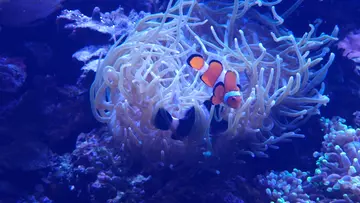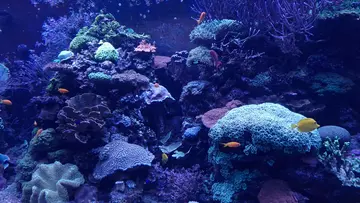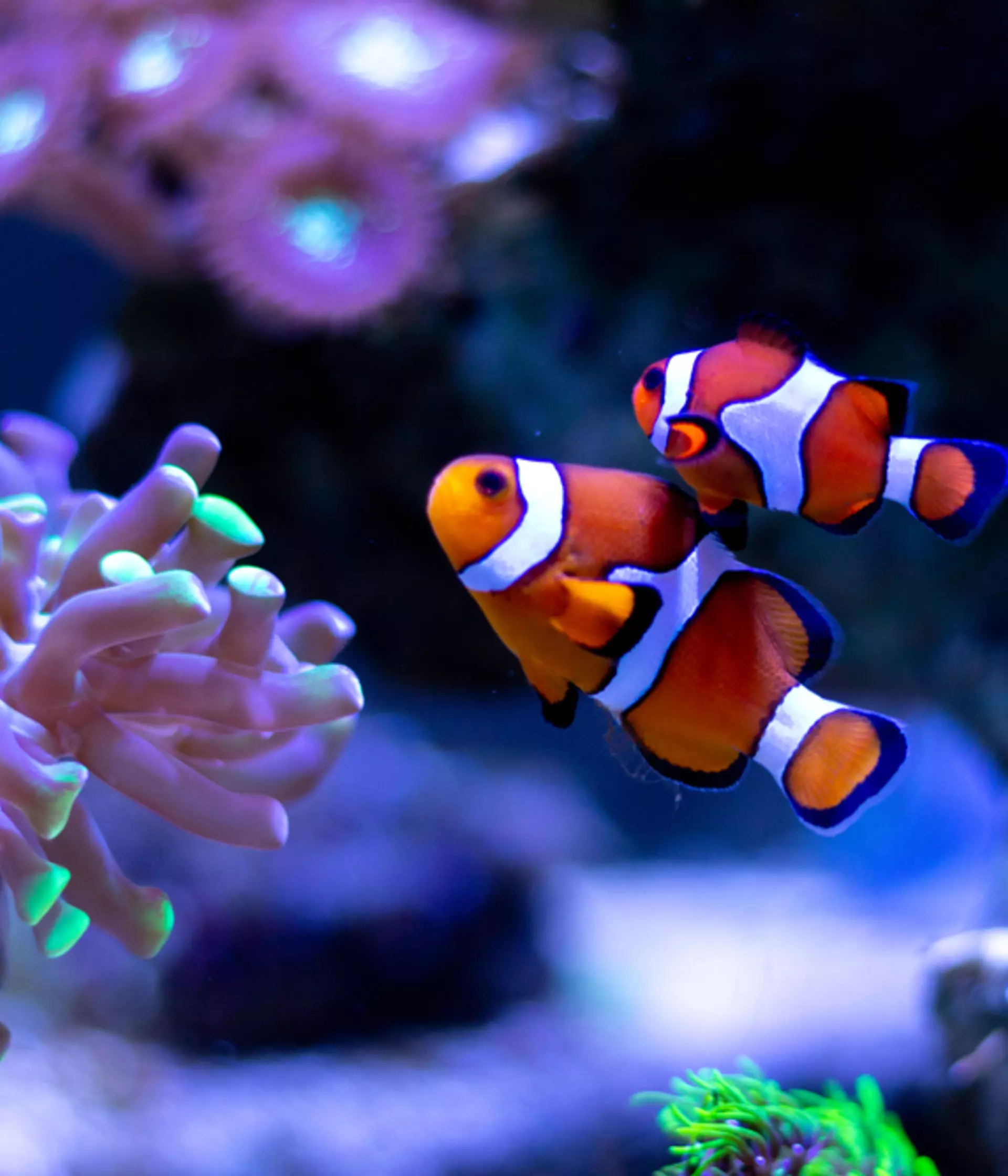
Why are clownfish called clownfish?
There are over 30 species in the clownfish family. London Zoo is home to the most recognisable species, the Ocellaris or common clownfish, which can be orange with white stripes or black with white stripes. These bright colours, combined with their confident personalities and unique swimming style, remind people of circus performers!

Why do clownfish live in anemones?
Clownfish have a symbiotic relationship with animals called anemones. These distant relatives of jellyfish and corals have stinging cells in their tentacles called nematocysts, capable of delivering a nasty sting. But clownfish are immune to the sting thanks to the thick, slimy mucus which covers their skin. Therefore, anemones make the perfect hiding place from predators. The clownfish help to keep the anemone clean and tidy, and it's thought their bright colours might act as a lure, drawing unsuspecting small fish into the anemone's tentacles. Clownfish get very territorial and defensive of their anemones, even going so far as to nip divers who get too close!
Clownfish social life
Despite the stereotype that fish aren't very clever, clownfish have complex social lives and can communicate with each other using popping and clicking noises. A group of clownfish is known as a circus, or queue! This is due to the strict hierarchy within the group. The largest female is the most dominant, but interestingly, all clownfish start life as males. If they're lucky enough to become the biggest clownfish in their group, they will undergo an amazing transformation and turn female. Many species of fish living on coral reefs change sex during their lives, either from male to female, or the other way around.
Clownfish reproduction
During breeding, a female clownfish will lay between 100 and 1500 eggs on a flat surface. They then leave the rest of the work to the male! Male clownfish are incredibly devoted fathers, not only do they defend the tiny eggs from predators, but they will also fan the eggs with their fins to make sure they receive enough oxygen. After a period of about 10 days, the eggs will hatch in the night, and tiny babies measuring 3mm long will swim off to join their own queue!
Where do clownfish live?
Clownfish are found on coral reefs in warm waters across the Indo-Pacific. They stick close to their symbiotic anemone hosts for protection and shelter.
What do clownfish eat?
Clownfish mainly eat small particles of food in the water such as plankton, shrimp and algae. They've also been known to eat the poo of their anemone hosts!
Clownfish threats
Many fish and coral species are threatened by overharvesting for the pet trade. If you're interested in keeping fish, make sure you only buy animals that have been bred in captivity. Many of the corals in our coral reef tank were seized by customs after being illegally imported into the country for the aquarium trade. You can also help to protect sea life by avoiding souvenirs made from coral, sea shells and starfish.

